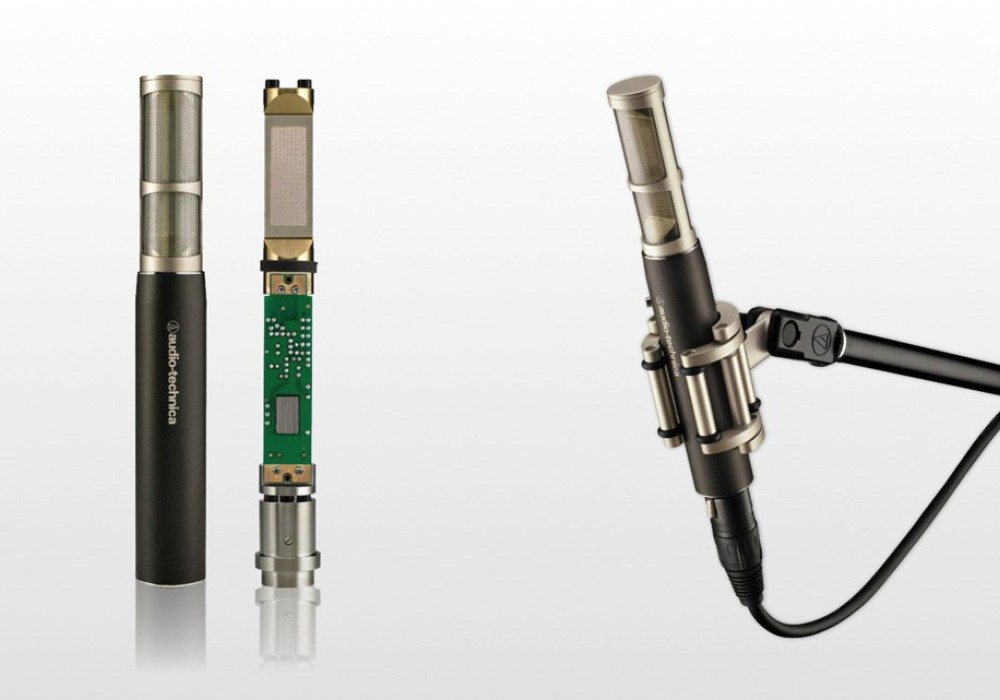In recent years, I’ve been tracking more bands “live” in the studio — sometimes with keeper vocals recorded at the same time as the instruments. And every now and then, vocalists ask to hold the mic in their hands, because that’s how they feel most comfortable performing. For moments like these, a large-diaphragm condenser mic is not going to cut it. Instead, a high-quality stage mic is a better choice for many reasons. Stage mics are voiced for close proximity, and they have internal pop filters. They offer unobstructed sight lines so that singers can watch the other musicians for cues. Their polar patterns are optimized for off-axis rejection to reduce bleed and feedback. Their capsules are internally suspended to reduce handling noise. And lastly, they can take a beating if they’re dropped or otherwise handled roughly.
With that said, some of these aims aren’t necessarily complementary to a polished, “studio” sound, so stage mics are often viewed as compromises when used for recording. The sE Electronics V7 handheld dynamic, on the other hand, is a stage mic that doesn’t feel like a compromise. I’ve had this mic for almost a year, and it’s captured amazing vocal performances, with stellar sounding results. Plus, the V7 excels at all of the requirements for live use — even more so than the industry standards. In that regard, let’s first talk about its price: $99 street — same as the Shure SM57, and less than the SM58 or Beta 58A. Soundwise, the V7 is most similar to the Beta 58A. Both have a supercardioid pickup pattern, a smooth buildup of proximity effect below 1 kHz, a welcome dip in the sibilance range centered at 6 kHz, a presence peak just below that, and a reciprocal bump in the highs above.
But beyond that broad description, the V7 has some clear advantages. It has greater high-frequency extension; according to my own measurements, rolloff starts at 14 kHz vs. 10 kHz. Also, its sibilance dip is a little bit wider, reaching down to 4.5 kHz vs. 5.5 kHz. Concurrently, its presence peak is centered lower at 3 kHz vs. 4.2 kHz. Importantly, to my ears, the upper mids and highs of the V7 sound smoother and less crispy to me. On the other end of the spectrum, the V7 has greater low-frequency extension. I can clearly hear the mic’s response down to 30 Hz, and proximity effect is less pronounced from 400 Hz down. Ramp-up is very smooth and forgiving, which makes the V7 an easy mic to “work” — as long as the singer stays on axis. Speaking of that, the V7 has amazing rejection, especially at 135° from center, which is the mic’s null point (or really, a null “cone”), offering almost total rejection. At 90°, I measured 10 dB of broadband attenuation — great rejection and a smooth off-axis frequency response, with fewer ups and downs in the spectrum vs. the Beta 58A. At the rear of the V7, rejection is mostly in the midrange; I measured 12–17 dB at 180°, while the Beta 58A rejects more of the lows and highs. There’s one final trait that’s worth pointing out — this one related to handheld use. Handling noise of the V7 is centered at 50 Hz, dropping off at 10 dB per octave. In other words, the V7’s self-resonance is more than one octave lower than that of the three Shure mics — which means you have a much greater chance of being able to EQ (or multiband-compress) the handling noise out of a V7-recorded track, without losing as much from the lows and low-mids. This is a tremendous advantage when your singer wants to hold the mic.
If you’re curious about all the technology behind these successes, visit the sE Electronics website for the lowdown on the V7’s aluminum voice coil, patented capsule suspension, and swappable internal windscreen. Meanwhile, I’m going to end this review by saying that I love the sound of the V7. Sure, it may not be up to par with your favorite large-diaphragm condenser, but I think it sounds clearer and has greater extension than what you would expect from the industry-standard live vocal mics — while still offering better rejection and lower handling noise. Moreover, given its stellar sonic performance, it’s also a great dynamic mic for drums, guitar amps, and other instruments too. I think every studio should have at least one V7 — for tracking live vocals, but also for recording anything that would make you pull out your other favored dynamic mics. Given its price, you can probably afford to buy a few of them.





_disp_horizontal_bw.jpg)